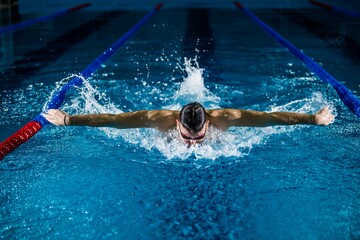How do we classify objects based on their state of matter?

Liquids take up the shape of their container, just like water in a pool.

Liquids take up the shape of their container, just like water in a pool.
When we talk about things around us, we often refer to how they feel - is it hard or soft? But did you know there are different types of matter things can be made of? These different types are called states of matter - there's solid, liquid, and gas.
Solids are usually hard and keep their shape. Think of your favorite toy block- it's a solid. The molecules, or tiny pieces that make up all matter, in a solid are tightly packed together and don't move around a lot. Some other examples of solids are rocks, ice, and your desk at school.
Liquids, on the other hand, don't keep their shape. They take up the shape of their container and can flow easily. When you pour yourself a glass of water, you're pouring a liquid. The molecules in a liquid are still close together, but they can move around more freely than in a solid. Some other examples of liquids are juice, soup, and your bathtub full of water.
Finally, gases are invisible and can't be seen. They also don't keep a shape, but instead fill up whatever space they're in. When you blow up a balloon, the air inside is a gas. The molecules in a gas are very spread out and move around very quickly. Some other examples of gases are air, smoke, and steam.
So, when we classify objects based on their state of matter, we look at what they're made of and how closely together their molecules are. Now you can impress your friends and family by telling them if something is a solid, liquid, or gas!

Liquids take up the shape of their container, just like water in a pool.